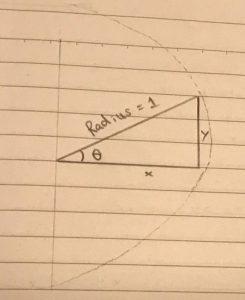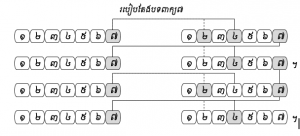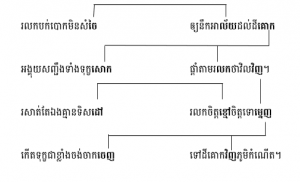For the research project this year, I decided to investigate on a social problem: sexual harassment. I find this topic to be something that mainstream media do not usually discuss. Moreover, it is in our culture to not commonly converse about such topic with the rest. On this topic, I mainly focus on verbal harassment. Just like physical harassment, verbal harassment is a common form of sexual harassment. Victims of verbal harassment, though may not experience any form of physical harassment, can be still be traumatized by the experience. I am focusing on female high-school students. I chose female high school students as my research target. The reason behind this is because in an environment like high schools, girls are surrounded with more boys and may can easily find themselves criticized verbally, when there is no adults around. Throughout this research project, I would like to examine the experiences of the verbal-harassed victims, and the effects it had on them afterwards, while also comparing the differences of verbal harassment between the city and the province.
Sketching a Polynomial Graph
To some people, sketching linear or quadratic equations appear to be a piece of cake, but when it comes to sketching polynomial graphs, we’re talking about “a whole nother” level.
Today, we’ll be running through the process of sketching a polynomial division graph.
First, go ahead and familiarize yourself with the word “polynomial”. As a mathematical term, polynomial refers to an expression of more than two algebraic terms.
Here comes the sketching procedure:
- Factor the polynomials
- Find Vertical Asymptotes
- Find Horizontal Asymptotes
- Solve for Y-intercept
- Solve for zeros
We will use the expression below as an exemplar.
2x
Why Tan θ = sin θ / cos θ
Frequently in math, when it comes to trigonometry, a lot of people know that Tan θ = sin θ / cos θ, but do you actually know why this concept is logical?
Let’s take a look at this triangle inside of the semi circle.
The triangle has a hypotenuse of the same length as that of the radius of the circle. We represent the opposite side of θ as y (the vertical axis) and the adjacent side as x (the horizontal axis). With that we can find cos θ and sin θ using x and y .
SOH CAH TOA
Sin θ = Opposite / Hypotenuse = y / 1 = y
Cos θ = Adjacent / Hypotenuse = x / 1 = x
Tan θ = Opposite / Adjacent = y / x = sin θ / cos θ
Flame Test Lab
FLAME TESTS LAB
Objective: To observe the relationship between various elements and their emission spectrum.
Introduction: Flame tests provide a way to qualitatively test for the presence of specific elements by seeing colored flames. The heat of the bunsen burner excites the electrons in the atom, and this energy is released as the electrons “fall back” to their ground states. The color we see is a combination of the visible wavelengths of light emitted by the atoms.
If you have a spectroscope you can also make quantitative observations. A spectroscope can be used to see a pattern of narrow lights called an emission (bright-line) spectrum. The actually wavelengths of the spectrum serve as a quantitative test to determine atoms identities. Each element has a different “pattern” of electrons so it will show a different combination of colors.
In this lab, you will perform flame tests on seven different elements. You will use your observations to identify an unknown solution.
Prelaboratory Questions:
1, Why do we see colors in the flame tests?
We see colors in the flame tests because of the heat from the flame excites the electrons and causes it to move to another shell, the energy is released once the electrons “fall back” to their ground state. The color we see is a combination of a visible wavelength that produces the visible light that we see. Each element has a different “pattern” of electrons. So the color combination may be different.
2, How will we be testing the substances qualitatively?
We will be testing the substances qualitatively by observing the flame colors.
Materials: Safety goggles, wood splints, tongs/tweezers, Bunsen burner, test tubes with various compounds
Safety:
1, Safety goggles must be worn at all time
2, Many of these salts are toxic. If you come into contact with any of the compounds make sure to notify the teacher and wash the contacted area thoroughly. Wash your hands before leaving the lab!
Procedure:
1, Light the Bunsen burner (turn the gas on so you can just hear it, then use the striker)
2, Place the wood splint for each compound into the flame using tongs or tweezers- ONE AT A TIME!
3, Take note of the color of the flame and return the wood splint to the solution.
4, CLEAN UP YOUR STATION! Carefully put the stoppers back on the solutions! Make sure the station looks like it did when you started! Let me know if you need new splints!
5, Wash your hands thoroughly before leaving the laboratory
Data Table: make a section of your lab labeled Data Table and make a data table similar to the one below to record your observations.
| Compound | The color of Flame (qualitative) | Wavelengths of light (in Å) (quantitative) |
| Barium Chloride | Orange | 5900 – 6200A |
| Calcium Chloride | Red | 6200 – 7500A |
| Copper (II) Chloride | Green | 4950 – 5700A |
| Lithium Chloride | Violet | 3800 – 4500A |
| Potassium Chloride | Orange | 5900 – 6200A |
| Strontium Chloride | Red | 6200 – 7500A |
Discussion and Analysis: (In a section labeled Discussion and Analysis answer the following questions in complete sentences)
1, How do your results from the flame test provide support for quantized energy levels? Explain your answer.
By heating the compound, the electrons got excited and jump to a higher energy. At the electrons “fall back” to their ground state, they emit energy (photon). The different element has a different pattern of electrons, therefore it has a different energy level. While releasing the energy, they also produce visible light as a result of a combination of visible wavelengths. This allows us to see the colors of the flame (qualitative data). The result collected from the flame test provide support for quantized energy levels as it provides the color for different compound and allowed us to look up the wavelength of different light color.
របៀបតែងបទពាក្យប្រាំពីរ
បទពាក្យ៧
ក. រង្វាស់កាព្យ :
ក្នុង១វគ្គ មាន៤ឃ្លា ក្នុង១ឃ្លាមាន ៧ព្យាង្គ្គ ។
ខ. ចួនក្នុងវគ្គ :
ព្យាង្គ្គទី៧ នៃឃ្លាទី១ ចួននឹងព្យាង្គ្គទី២ ឬព្យាង្គ្គទី៤ នៃឃ្លាទី២ ។
ព្យាង្គ្គទី៧ នៃឃ្លាទី២ ចួននឹងព្យាង្គ្គទី៧ នៃឃ្លាទី៣ ហើយចួននឹងព្យាង្គ្គទី២ ឬព្យាង្គ្គទី៤ នៃឃ្លាទី៤ ។
គ. ចួនឆ្លងវគ្គ:
ព្យាង្គ្គទី៧ នៃឃ្លាទី៤ ក្នុងវគ្គមុន ចួននឹងព្យាង្គ្គទី៧ នៃឃ្លាទី២ ក្នុងវគ្គបន្ទាប់ ។
ឃ. កំណត់សម្គាល់:
បើសិនជាកំណាព្យចួននឹងឃ្លាទី២ រាល់វគ្គក្នុងកំណាព្យត្រូវចួននឹងឃ្លាទី២ ។ ហើយបើសិនជា កំណាព្យចួននឹងឃ្លាទី៤ រាល់វគ្គក្នុងកំណាព្យត្រូវចួននឹងឃ្លាទី៤ ។
ឧទាហរណ៍:
(និពន្ធដោយ ឈឺន ឈឿ)
ចួនក្នុងវគ្គ
ព្យាង្គ្គទី៧ នៃឃ្លាទី១ ក្នុងវគ្គទី១ ជួននឹង ព្យាង្គគ្គទី៤ នៃឃ្លាទី២ ក្នុងវគ្គទី១ ។
ព្យាង្គ្គទី៧ នៃឃ្លាទី២ ក្នុងវគ្គទី១ ជួននឹងព្យាង្គទី៧ នៃឃ្លាទី៣ ក្នុងវគ្គទី១ ហើយជួននឹង
ព្យាង្គទី៤ នៃឃ្លាទី៤ ក្នុងវគ្គទី១ ។
ចួនឆ្លងវគ្គ
ព្យាង្គ្គទី៧ នៃឃ្លាទី៤ ក្នុងវគ្គទី១ ជួននឹងព្យាង្គទី៧ នៃឃ្លាទី២ ក្នុងវគ្គទី២ ។
Girl Power — An all-female Robotics tournament champion
Initially, things didn’t process as smooth as we planned. Did not catch up with the schedule, did not collaborate well, did not balance between how much work we had to do and how much time we had left, etc.
Bangkok awaited. The competition day has arrived. But how can a team encountering so many challenges find their way out to achieve the trophy?
During the competition, every member of Beta-B has worked relentlessly as a team, fixing most of the mechanical issues. The programming for the autonomous round (robot runs on its own without a person manipulating), however, didn’t run correctly. At this point, hope was withering, regarding the facts that we were all inexperienced. Fortunately, our first qualifying match was a victory. The games went on until lunch. Problems kept coming on our way, but we’ve never given up. By our last qualifying match, we have ranked the 11th place (out of 20 teams).
But this time, we handled the situation differently. We were as satisfied and cheerful as we could be, considering that we’ve come this far as a team, overcoming not just mechanical problems, but collaboration as well.
Regardless of that, luck was on our side. The system of the game was allowing the higher ranked team to form an alliance of three teams. I wasn’t sure if we’re going to be chosen or not, but one of my teammates told me “Go and take a seat, fix our robot, chill and look cool. Someone’s gonna come and ask us to be their alliance.”
Apparently, a lot of teams wanted us. Now that we consider that, Beta-B was the only team who could stack the high cones on the stationary goals, which could earn extra points. By being an alliance with the first-place team and the second-place team, we kept striving until we became the tournament champion as an alliance, the most unexpected awards of all.
Not winning was fine, since we were all very pleased with the result we got, and the accomplishment, but to win the tournament was astonishing. It wasn’t just luck that led us to this, but the collaboration, encouragement and the guts to never give up.


Cambodian mindset and restriction
Cambodia is an old nation that has been created long ago. Throughout each era, virtuous traditions and culture were passed on by our ancestors. Nevertheless, as a matter of fact, some of these cultures and traditions have earnestly influenced our contemporary society. In order to gain a higher awareness of these traditions or so-called “mindset”, my team has conducted surveys with several interviewees. Below is what we were told:
-
Girls aren’t allowed to study away from home
Few people living in the rural regions believe that parents shouldn’t allow their daughter(s) to study in the city that’s distant from their home. The reason is without any guidance, their daughter(s) might walk the wrong path (in opposition to Cambodian traditions), that could ruin the family’s reputation.
-
Man is the head of the family.
Husband is the only one who makes decisions. By doing so, his wife must always ask for opinions and permissions from the whole family and her husband before execution. If her husband says “no”, she has no rights to go against him and must not execute what she has requested. Besides, people think that it’s an obstacle for women to feed their children and managing the family without her husband.
-
Marriage is an obligation for women.
The society expects all women to have a life partner. Their lives are not completed without having a family. If she doesn’t have a marriage, she will be discriminated by the whole crowd.
These are only some of the information we gathered from our survey. Nonetheless, the responses were mostly focused on Cambodian women and this, undoubtedly, express the restrictions and extreme mindset from the society on women.
ប្រទេសកម្ពុជាមានដើមកំណើតជាយូរលង់ណាស់មកហើយ ។ បុព្វបុរសខ្មែរបានបន្សល់ទុកនូវអរិយធម៌ និងវប្បធម៌ល្អល្អះជាច្រើនអនេកមកកាន់កូនៗជំនាន់ក្រោយ ។ បើទោះបីជាយ៉ាងនេះក៏ដោយ វប្បធម៌ និងទំនៀមទំលាប់ខ្លះបានជះឥទ្ធិពលយ៉ាងខ្លាំងមកលើសង្គមខ្មែរនាពេលបច្ចុប្បន្ន ។ ដើម្បីអោយកាន់តែយល់ច្បាស់អំពីទំនៀមទំលាប់ ឬដែលយើងអាចហៅថាជាផ្នត់គំនិតនោះ ក្រុមរបស់នាងខ្ញុំបានសហការគ្នា ចុះធ្វើស្ថិតិជាមួយបងប្អូនប្រជាពលរដ្ឋមួយចំនួន ហើយនេះគឺជាអ្វីដែលពួកគាត់បានប្រាប់ :
១. មនុស្សស្រីមិនអាចរៀនឆ្ងាយពីផ្ទះ
ប្រជាជនមួយចំនួននៅឯជនបទនៅតែគិតថា ឪពុកម្ដាយមិនគួរឲ្យកូនស្រីសិក្សានៅឯទីក្រុងដែលឆ្ងាយពីក្រុមគ្រួសារនោះទេ ។ មូលហេតុគឺមកពីគេជឿថា កូនស្រីនឹងដើរផ្លូវខុស ហើយធ្វើអ្វីដែលខុសឆ្គងទៅនឹងប្រពៃណីនៅពេលដែលពួកគេមិនស្ថិតក្រោមការគ្រប់គ្រងរបស់គ្រួសារ ។
២. បុរសត្រូវជាអ្នកដឹកនាំគ្រួសារ
ស្វាមីគឺជាអ្នកដែលសម្រេចចិត្តគ្រប់បែប។ ដូច្នេះហើយ ប្រពន្ធត្រូវតែសាកសួរគ្រួសាររបស់គាត់មុនពេលសម្រេចធ្វើអ្វីមួយ ។ បើសិនជាស្វាមីរបស់គាត់មិនអនុញ្ញាតគឺគាត់មិនត្រូវធ្វើវាឡើយ ។ ម៉្យាងវិញទៀត នោះពេលដែលអត់ពីស្វាមីទៅ ប្រជាជនខ្មែរតែងតែគិតថាប្រពន្ធនឹងមានការលំបាកក្នុងការចិញ្ចឹមកូន និងគ្រប់គ្រងគ្រួសារ ។
៣. មនុស្សស្រីត្រូវតែរៀបការ
សង្គមទាំងមូលតែងតែរំពឹងទុកថា មនុស្សស្រីទាំងអស់ត្រូវតែមានគូរស្រករ ។ ជីវិតរបស់ពួកគេនឹងមិនពេញលេញឡើយ បើសិនមិនមានគ្រួសារដូចគេដូចឯង ។ បើសិនជាពួកគេមិនរៀបការ ពួកគេអាចរងនូវពីការរើសអើងពីអ្នកដទៃ ។
៤. កូនចៅត្រូវតែរៀបការតាមទំនៀមទំលាប់
វាជាអ្វីដែលប្រជាជនខ្មែរយើងតែងតែធ្វើពីដើមមកម្លេះ ។ ដូច្នេះ កូនចៅជំនាន់ក្រោយត្រូវតែគោរពប្រពៃណីនោះដោយត្រូវរៀបការតាមបែបបទដែលខ្មែរយើងធ្លាប់ធ្វើ ។
៥. ស្រ្ដីមិនអាចជៀសចាន ឆ្នាំងរួចទេ (ស្រ្ដីវិលចង្ក្រានមិនជុំ)
កូនស្រីត្រូវតែផ្គត់ផ្គង់គ្រួសារ និងកូន ហើយគិតគូរពីពួកគាត់ដោយរៀបចំផ្ទះសំបែង និងម្ហូប ។ ចាស់ៗតែងតែនិយាយថា កូនស្រីរៀនល្មមៗបានហើយ មិនបាច់ខ្ពស់ពេកទេ ដោយសារតែពេលមានគ្រួសារគាត់ត្រូវតែនៅផ្ទះ ហើយត្រូវបោះបង់ការងារ រឺការសិក្សា ។
៦. ក្រោយពេលស្រ្ដីឆ្លងទន្លេ ពួកគាត់ត្រូវតែតម
មនុស្សស្រីត្រូវតែបិរិភោគអាហារក្រៀមក្រោះ រឺហិលៗដូចជាអាហារដែលលាយឡំជាមួយនឹងម្រេច
និងផឹកស្រាថ្នាំ ។ ពេលខ្លះ នៅពេលដែលពួកគេមានអាការៈដូចជា វិលមុខ ឈឺក្បាល បងប្អូនខ្មែរយើងខ្លះជឿថាពួកគេកំពុងតែទាស់ដោយសារតែបរិភោគអាហារមិនចេះតម ។
៧. ការប្រើប្រាស់ថ្នាំខ្មែរ
ពេលស្ត្រីមានគភ៌ និងហូបអាហារខុស វាបណ្ដាលឲ្យគាត់ទាស់។ ប្រជាជនបស្វែងរកថ្នាំខ្មែរ ភាគច្រើនជា រុក្ខជាតិ។ សូម្បីតែចាស់ៗមិនស្គាល់មុខងារនៃថ្នាំច្បាស់លាស់ ឬក៏ពេលណាត្រូវប្រើថ្នាំណា។
ទាំងនេះគឺជាព័ត៌មានត្រួសៗដែលយើងបានមកពីការធ្វើសិ្ថតិ យ៉ាងណាមិញចំលើយដែលយើងទទួលបានភាគច្រើនគឺផ្តោតទៅលើស្ត្រីខ្មែរ ហើយនេះ ស បញ្ជាក់យ៉ាងច្បាស់ពីការដាក់គំហិត និងផ្នត់គំនិតបែបជ្រុលនិយមហួសរបស់ខ្មែរមកកាន់ភាពជាស្រ្តី ។
Speech and Debate
Aside from picking a topic and debate for an hour, we redirect our focus on strategies used in speaking or even the voices that are stated in pictures. That includes formal speeches, presentation, posters or flyers in the advertisement. In other words, we learned about rhetorical appeals. There are three which are Ethos, Pathos, and Logos. Ethos is about how you convince an audience of your credibility. Pathos appeals to emotion which could sometimes be irrational and unpredictable Logos is the use of logic and reason, using factual knowledge to convince the audience. For example, analogy, examples, citations of research or statistics. After trying to comprehend these three rhetorical appeals, we took it to another level by applying one of these three when giving a one-minute speech. You are given three words. Then you need to make connections between the three words and give a persuasive speech using one of the three appeals. It’s very useful to take a closer look at the art of persuasion because, in our daily life, we apply these strategies in our speech without even noticing it.
Solar Pi Grant Writing
In order to get funds to implement the Solar Pi project in two pilot schools, a grant proposal was required. This money is to support the Solar Pi Exploration Round 2, which I am not a part of.
Summary of Solar Pi Exploration: Implement Solar Pi into two government schools to test out the program. If it works well within these two schools, the program can be expanded in a wider range Cambodia. Solar Pi runs by using the converted energy from the sun; it has a long-term durability. In countries like Cambodia, it’ll be an advantage because of the vast amount of sunlight. By using Solar Pi, little to no money is required, unlike electricity. We can install offline applications including English and 3D program that students can self-teach during free time. This will raise their proficiency to the highest levels before graduating from high school which will further be beneficial for the students and Cambodia.
However, without the money, the project won’t process. The grant is strenuous. You have to understand most parts of the project, have every little piece of information, brainstorm an outline for the grant, and finally, fill out all the sections of the grant. Furthermore, persuasive language is necessary. It was really quite a challenge because it was my first time. Lastly, the grant was finalized and sent out and hopefully, it’ll be accepted!
Pchum Ben
During Khmer class, we were working on writing a report about a ceremony called Pchum Ben. Pchum Ben is a ceremony that dedicates those the spirits that we believe are in hell. People believe that during this ceremony, in a period of 15 days, those spirits are freed from hell to get food from their family. So, we wrote a report about the celebration of the ceremony, apparels to go to the pagoda and the history about this event.




